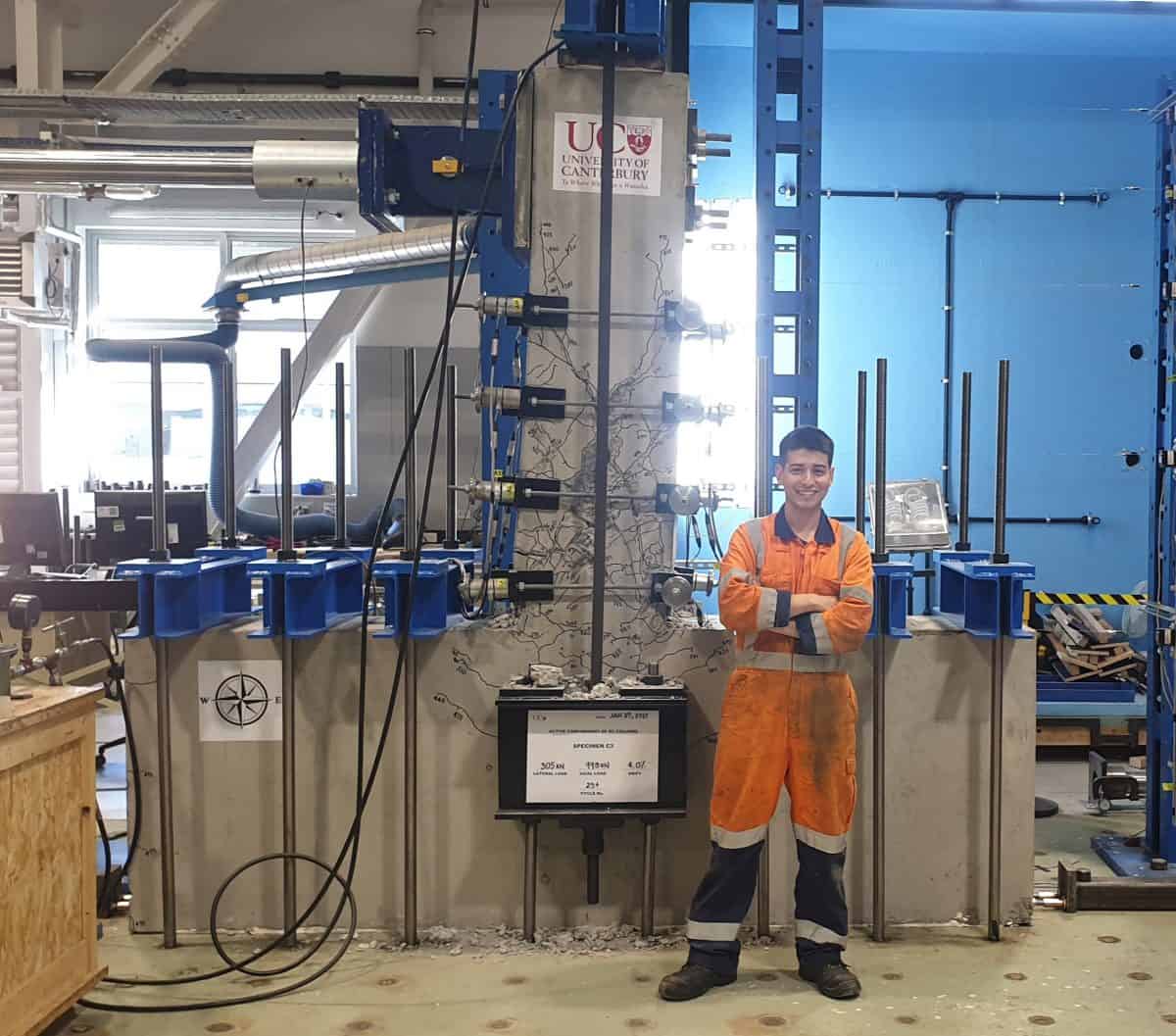Seismic Response of Reinforced Concrete Columns with Active Confinement
I was born and bred in Cali, Colombia. Cali is located on the Cauca river valley, approximately 100 km east from the Colombian Pacific coast. Growing up in the Ring of Fire region, I became passionate about earthquakes. After completing my Bachelor’s degree in civil engineering from the Universidad del Valle, I worked as a structural engineer for a couple of years before moving to New Zealand.
Funny enough, I did not move to New Zealand to study a PhD Originally, I had no other intention than to improve my English language skills. Nevertheless, COVID-19 occurred and changed my original plans. With stagnant international travelling, I found myself worriedly stuck in New Zealand. However, that brought the best possible outcome—gaining a Resilience to Nature’s Challenges PhD scholarship and settling in Christchurch for studies in what I love: structural and earthquake engineering. Meanwhile New Zealand became probably one of the safest places to be during the COVID-19 pandemic to boot!
I am enjoying the whole experience of my PhD at the University of Canterbury. New Zealand’s unique nature has made me find a special connection with the outdoors and care about our world.
My Project
There are hundreds of thousands of old reinforced concrete (RC) buildings in highly seismic areas in the world that were not designed to sustain demands from earthquakes. For all those buildings and, more importantly, their occupants, the availability of an effective yet simple retrofit or repair system can help mitigate the effects of the next earthquake. Current options for retrofitting RC columns (e.g. FRP wrapping, and steel and concrete jacketing) require highly qualified workmanship and involved installation. An alternative that is reliable and easy to apply is needed, especially for developing countries and mass retrofitting of large inventories of structures.
My research aims to develop a simple yet effective method for the retrofit and repair of RC columns not designed to withstand strong shaking. The proposed method shall be validated through experimental testing and numerical analysis.
What I like the most about my project is the experimental part. ‘Destroying’ large-scale columns in the lab is so much fun! I will be testing eleven of these RC columns to test my hypotheses against experimental evidence.

Next Steps
Apart from my experimental work, I will be doing some numerical projections to address the following question: How much could the probability of collapse, and economic and life losses be reduced if the proposed retrofit method was used? For that purpose, I plan to use drawings of RC buildings identified as vulnerable in New Zealand.
Parallel projects in other universities such as the National University of Taiwan, University of Auckland, and Texas A&M University will contribute with experimental results to feed my investigation. Through this work we hope to minimise the seismic risk of the building stock in earthquake-prone countries.




